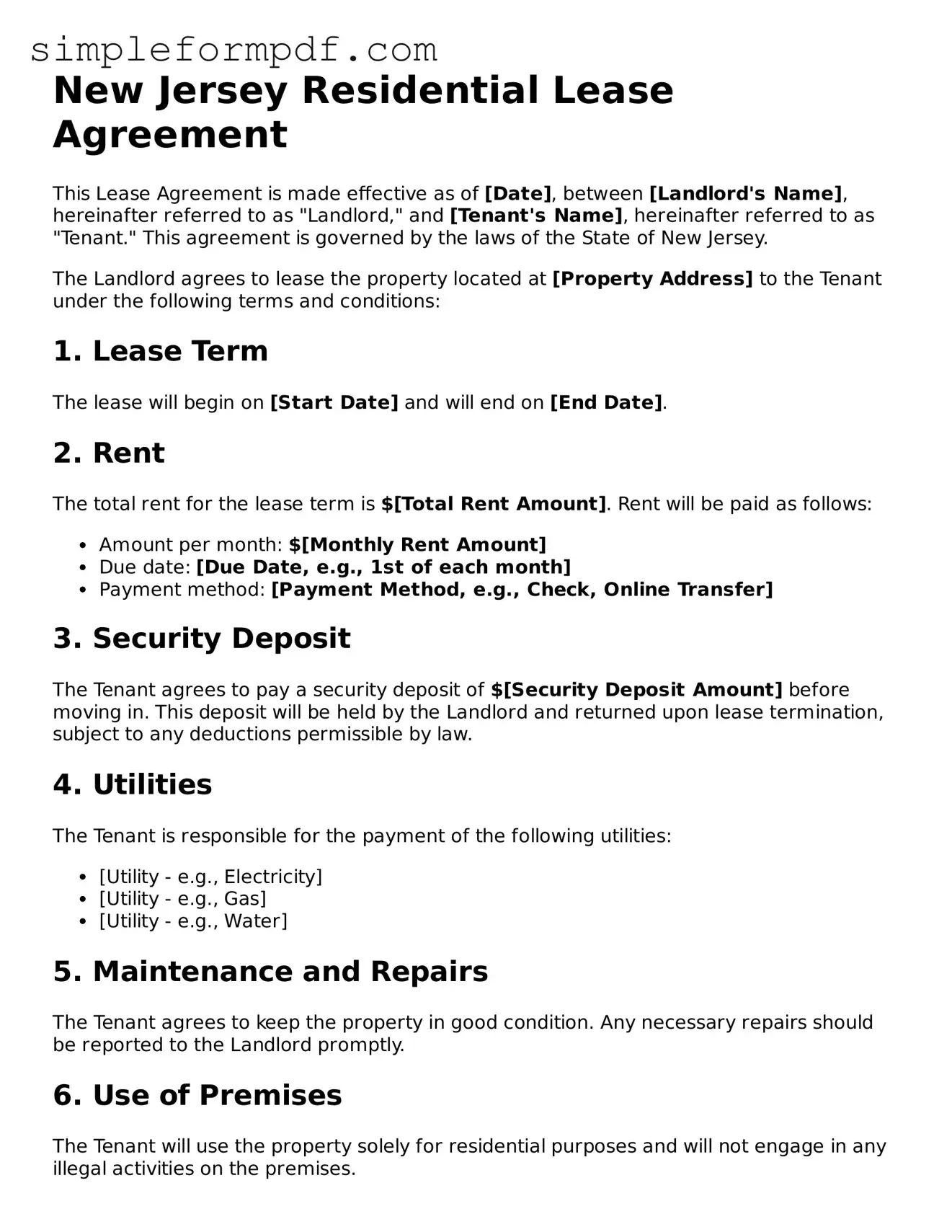New Jersey Residential Lease Agreement
This Lease Agreement is made effective as of [Date], between [Landlord's Name], hereinafter referred to as "Landlord," and [Tenant's Name], hereinafter referred to as "Tenant." This agreement is governed by the laws of the State of New Jersey.
The Landlord agrees to lease the property located at [Property Address] to the Tenant under the following terms and conditions:
1. Lease Term
The lease will begin on [Start Date] and will end on [End Date].
2. Rent
The total rent for the lease term is $[Total Rent Amount]. Rent will be paid as follows:
- Amount per month: $[Monthly Rent Amount]
- Due date: [Due Date, e.g., 1st of each month]
- Payment method: [Payment Method, e.g., Check, Online Transfer]
3. Security Deposit
The Tenant agrees to pay a security deposit of $[Security Deposit Amount] before moving in. This deposit will be held by the Landlord and returned upon lease termination, subject to any deductions permissible by law.
4. Utilities
The Tenant is responsible for the payment of the following utilities:
- [Utility - e.g., Electricity]
- [Utility - e.g., Gas]
- [Utility - e.g., Water]
5. Maintenance and Repairs
The Tenant agrees to keep the property in good condition. Any necessary repairs should be reported to the Landlord promptly.
6. Use of Premises
The Tenant will use the property solely for residential purposes and will not engage in any illegal activities on the premises.
7. Termination
Should either party wish to terminate this lease before the end date, written notice of [Notice Period, e.g., 30 days] must be given.
8. Governing Law
This agreement shall be governed by and construed in accordance with the laws of the State of New Jersey.
In witness whereof, the parties have executed this Lease Agreement on the date first above written.
Landlord Signature: ________________________ Date: _____________
Tenant Signature: _________________________ Date: _____________
